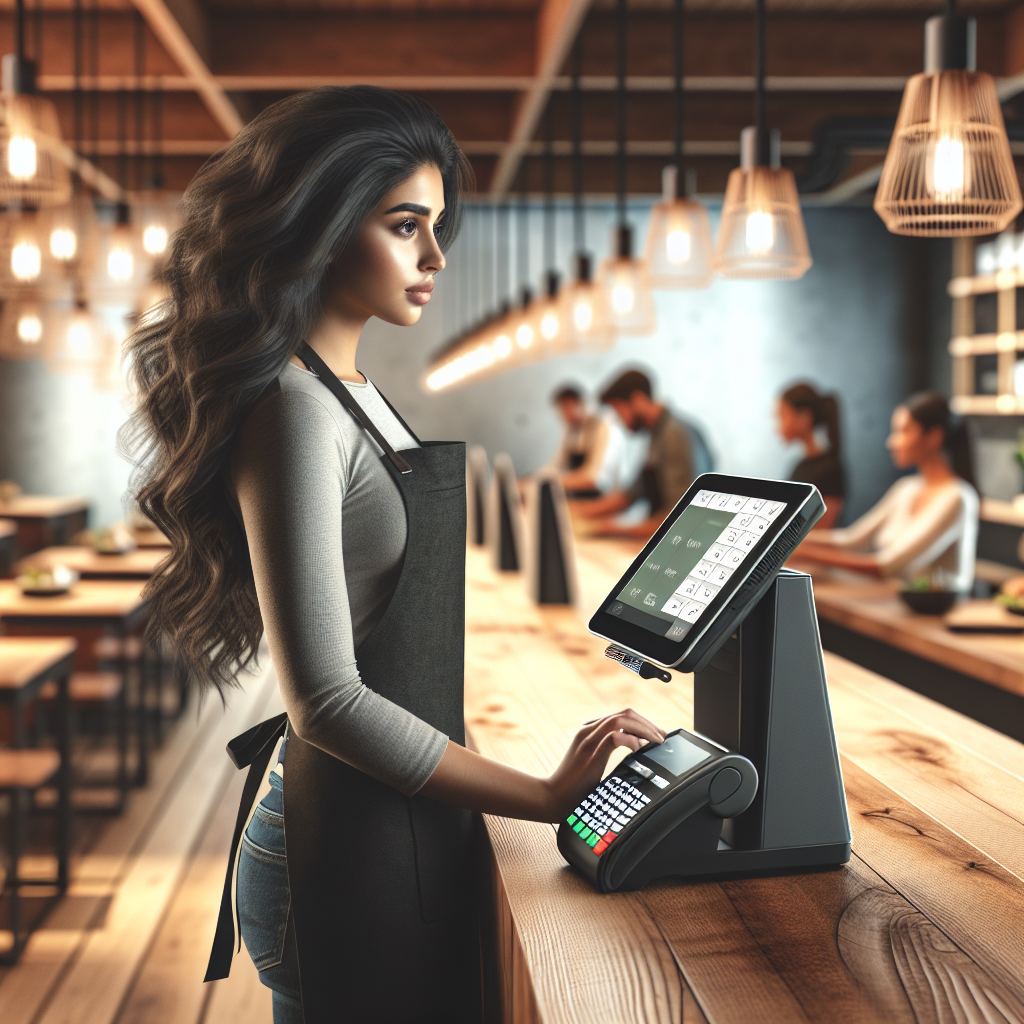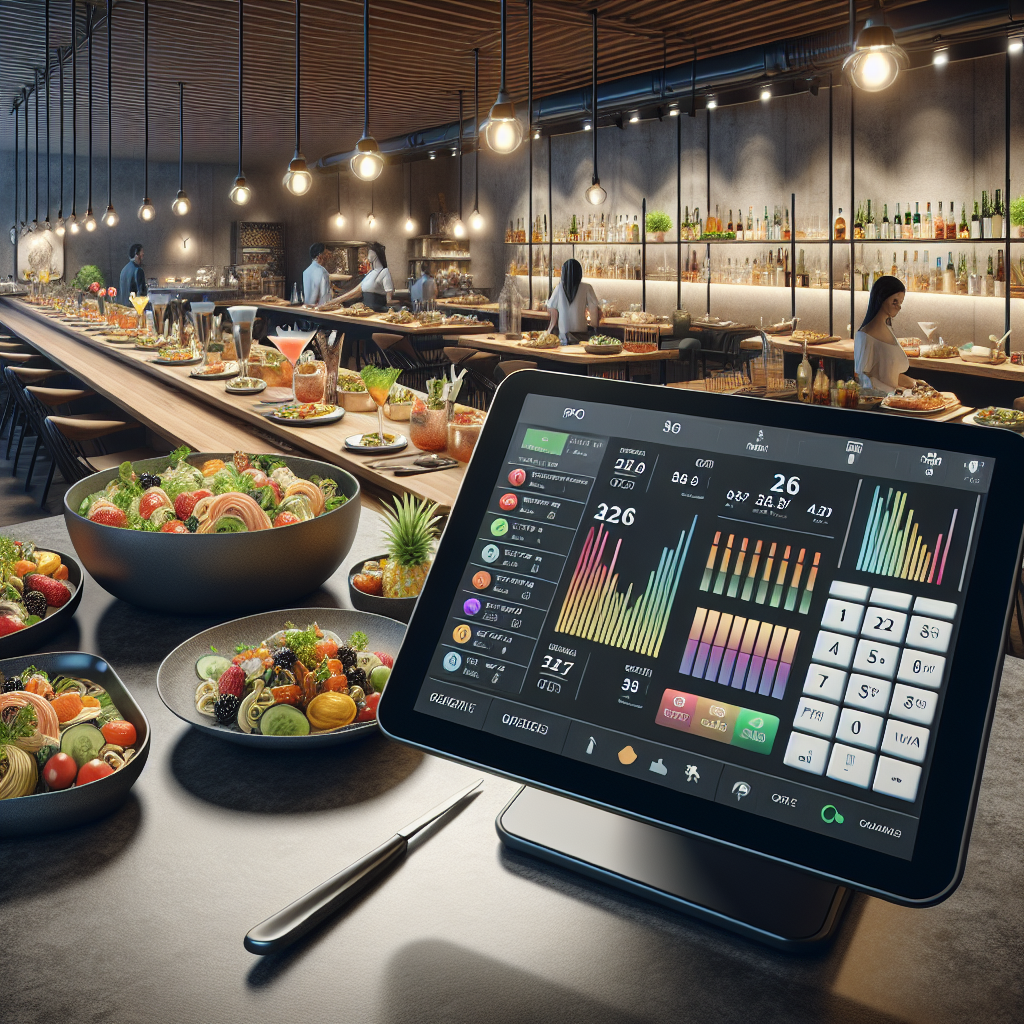In the competitive landscape of the restaurant industry, embracing technology can significantly enhance operational efficiency. One of the most compelling advancements is the adoption of open source restaurant POS systems. These systems offer numerous benefits that can transform how restaurants manage their transactions and customer interactions.
Firstly, open source POS solutions provide customizability. Unlike traditional POS systems, which often come with rigid structures, open source platforms allow restaurant owners to tailor the software to their specific needs. This means that features can be added, modified, or removed based on the unique requirements of the business.
Secondly, cost-effectiveness is a major advantage. By choosing open source software, businesses can save significantly on licensing fees, which tend to be high with proprietary systems. This reduction in costs enables restaurants to allocate resources to other critical areas, such as enhancing customer service or expanding menu options.
Furthermore, open source systems foster a community-driven approach. Users can share their experiences, tips, and even modifications with each other, creating a collaborative environment that aids continuous improvement of the software. This community support can be invaluable for troubleshooting and optimizing the system.
Lastly, with the right open source POS, restaurants benefit from enhanced data security. Since the code is open for review, it can be scrutinized for vulnerabilities, allowing for quicker updates and fixes compared to closed-source systems.
If you’re interested in getting started, contact us at 888-641-8910 or Email us to explore how we can help you implement an open source POS solution that suits your restaurant’s needs.
Key Features to Look for in Restaurant POS Solutions

When selecting a restaurant POS solution, it’s essential to identify the key features that can enhance functionality and streamline operations. The right features not only improve customer experience but also contribute to overall business efficiency.
One of the primary features to look for is inventory management. A robust POS system should allow restaurant owners to track stock levels in real-time, helping to prevent inventory shortages and reduce waste. This feature also enables better planning for purchases and menu adjustments based on available ingredients.
Another critical feature is customer relationship management (CRM). A POS system integrated with CRM tools can help restaurants gather valuable customer data, such as preferences and order history. This information can be leveraged for targeted marketing campaigns and personalized service, ultimately enhancing customer loyalty.
Reporting and analytics capabilities are also essential in a restaurant POS solution. Comprehensive reporting tools enable owners and managers to analyze sales trends, track employee performance, and make data-driven decisions. These insights can lead to strategic adjustments in operations and marketing efforts.
Additionally, look for features that support multiple payment options. A flexible POS system should accommodate various payment methods, including credit cards, mobile payments, and contactless transactions, ensuring a seamless checkout experience for customers.
Lastly, consider the user interface. A user-friendly interface is crucial for staff training and daily operations. The easier it is for employees to navigate the system, the quicker they can serve customers, enhancing overall service speed and efficiency.
How Open Source POS Solutions Reduce Processing Fees
One of the most appealing advantages of open source POS solutions is their potential to significantly reduce processing fees for businesses. Traditional POS systems often come with hefty licensing fees and high transaction costs, which can eat into a restaurant’s profits. In contrast, open source systems provide a more flexible and cost-effective alternative.
First, open source POS solutions typically require no upfront licensing fees. This means that restaurants can deploy a robust system without the burden of large initial investments. Instead, they can allocate their resources toward other critical areas of their business, such as marketing or menu development.
Furthermore, open source solutions allow for a high degree of customization. Businesses can modify the software to fit their specific needs, which can lead to increased efficiency and reduced operational costs. By tailoring the features and functionalities to their workflow, restaurants can minimize redundant processes that often contribute to higher fees.
Another significant benefit is the ability to choose payment processors. Unlike proprietary systems that may be tied to specific payment gateways, open source POS solutions allow restaurants to integrate with multiple payment processors. This competition can drive down transaction fees, as businesses can shop around for the best rates, ultimately leading to substantial savings.
Additionally, by having full access to the software code, businesses can continuously improve their systems and optimize performance without relying on third-party vendors. This autonomy fosters an environment where restaurants can innovate and adapt to changing market dynamics without incurring additional costs.
In summary, the flexibility, customization, and cost-saving opportunities offered by open source POS solutions can significantly lower processing fees, making them an attractive option for restaurant owners looking to enhance their bottom line.
Comparing Open Source POS with Traditional Systems

When evaluating payment processing options, it is essential to understand the key differences between open source POS solutions and traditional POS systems. Each has its unique advantages and drawbacks, but open source systems are increasingly becoming the preferred choice for many businesses, particularly in the restaurant industry.
One of the most notable distinctions lies in cost structure. Traditional POS systems often require substantial upfront investments for hardware and licensing, coupled with ongoing fees for software updates and support. In contrast, open source POS solutions typically have minimal initial costs, allowing businesses to invest more in operational growth and customer experience.
Another critical difference is flexibility. Open source systems are highly customizable, enabling restaurants to tailor the software to their specific operational needs. This adaptability allows for the integration of unique features that can enhance efficiency, such as specialized reporting or inventory management tools. Traditional systems, however, often come with a one-size-fits-all approach, limiting their ability to adapt to specific business requirements.
Support and updates also vary significantly. Traditional POS providers usually offer dedicated customer service, but this often comes at a premium. Open source solutions rely on community support and forums, which can be a double-edged sword. While there’s a wealth of shared knowledge available, the lack of direct support can be challenging for those who lack technical expertise.
Security is another aspect worth considering. Traditional POS systems may offer built-in security measures, but they can also be more susceptible to large-scale breaches, given the centralization of data. Open source systems, on the other hand, allow for transparent security checks and updates, enabling businesses to implement their security protocols tailored to their specific risks.
In summary, while traditional POS systems offer certain conveniences, the cost-effectiveness, flexibility, and adaptability of open source POS solutions make them an increasingly popular choice among restaurant operators looking to optimize their payment processing systems.
Implementing Open Source Solutions in Your Restaurant

Transitioning to an open source POS solution in your restaurant can be a transformative process, enhancing both operational efficiency and customer experience. However, successful implementation requires careful planning and execution to ensure a smooth transition.
First, it is crucial to assess your restaurant’s specific needs and workflows. Identify the features that will be most beneficial for your operations, such as inventory management, customer relationship management, or analytics. This assessment will help narrow down the best open source POS options available, allowing you to choose a system that aligns with your objectives.
Next, involve your staff in the selection process. Gathering feedback from employees who will use the system daily is essential for ensuring that the chosen solution meets their needs and preferences. Their insights can guide the decision-making process and foster a sense of ownership in the new system, which can ease the transition.
Once you’ve selected an open source POS system, it’s time to focus on installation and integration. Ensure that the new system is compatible with your existing hardware, such as printers and payment terminals. Additionally, consider integrating the POS with other essential systems, like accounting software or online ordering platforms, to streamline operations.
Training is another critical component of successful implementation. Provide comprehensive training sessions for your staff to familiarize them with the new system. This training should cover everything from basic functionalities to advanced features. Consider utilizing video tutorials or documentation that employees can refer back to as they become accustomed to the system.
Finally, monitor the system’s performance after implementation. Gather feedback from staff and customers to identify any issues and areas for improvement. Regularly updating and customizing the open source solution based on user experiences will ensure that the system continues to meet your restaurant’s evolving needs.
Future Trends in Open Source Restaurant POS Technology

The landscape of open source restaurant POS technology is continuously evolving, with several noteworthy trends shaping its future. By keeping an eye on these trends, restaurant owners can stay ahead of the curve and leverage technology to enhance their operations and customer experiences.
One significant trend is the increasing adoption of cloud-based solutions. Cloud technology provides restaurants with the flexibility to access their POS systems from anywhere, facilitating remote management of operations. This trend not only enhances accessibility but also contributes to data security and real-time analytics, allowing restaurant owners to make informed decisions on the go.
Another emerging trend is the integration of artificial intelligence (AI) and machine learning into open source POS systems. These technologies enable predictive analytics, helping restaurants forecast sales, manage inventory efficiently, and personalize customer experiences. AI-driven insights can guide marketing efforts and optimize menu offerings based on customer preferences and spending patterns.
Additionally, the rise of mobile payment solutions continues to shape the POS landscape. As consumers increasingly opt for contactless payment methods, open source POS systems are evolving to accommodate these preferences. Features like mobile wallets and QR code payments are becoming standard, enhancing convenience for customers and streamlining transactions for restaurants.
Lastly, sustainability is becoming a pivotal focus in the restaurant industry, influencing POS technology. Open source solutions are adapting to support environmentally friendly practices, such as reducing paper waste through digital receipts and integrating with local sourcing platforms to promote sustainable food practices.
Staying informed about these trends is crucial for any restaurant looking to implement or upgrade their POS system. If you’re interested in getting started, contact us at 888-641-8910 or Email us for tailored solutions that can help your restaurant thrive in the evolving landscape of payment processing.





